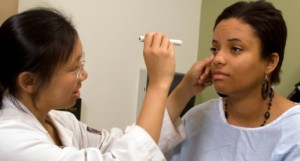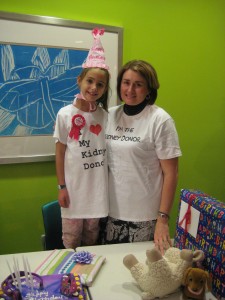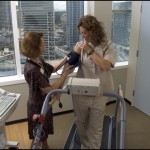A new study reported this week in the Archives of Internal Medicine delivers encouraging news that Americans are on the right track in the fight against heart disease among women.
The study reports that all women, especially those younger than 55, have recently experienced a greater increase than men in their chances of survival following a heart attack.
Study leader, Viola Vaccarino, MD, PhD, professor of medicine (cardiology), and director of the Emory Program in Cardiovascular Outcomes Research and Epidemiology, researched trends in the rate of in-hospital deaths following heart attack from June 1994, through Dec. 2006. Data were collected from 916,380 patients through the National Registry of Myocardial Infarction.
Between 1994 and 2006, in-hospital death rates decreased among all patients, but decreased more strikingly in women than in men. The decreased risk of death was largest in women younger than 55 years (a 52.9 percent reduction) and lowest in men of the same age (33.3 percent). The absolute reduction in the risk of death among patients younger than 55 was three times larger in women (2.7 percent) than men (0.9 percent).
Vaccarino and her colleagues say a large part (93 percent) of this sharper decrease in mortality of younger women compared with men in recent years is due to the improved risk profile of women compared with men at the time of the heart attack hospitalization, perhaps the result of better recognition and management of coronary heart disease and its risk factors in women before the acute heart event.
Whatever the reason, the improvement indicates that we are headed in the right direction, says Vaccarino. Increased and ongoing awareness to the prevention of cardiovascular risk factors—by healthy diet, regular physical activity and avoidance of smoke and smoking—is saving lives, she notes.












 There’s a place in Midtown Atlanta called the
There’s a place in Midtown Atlanta called the